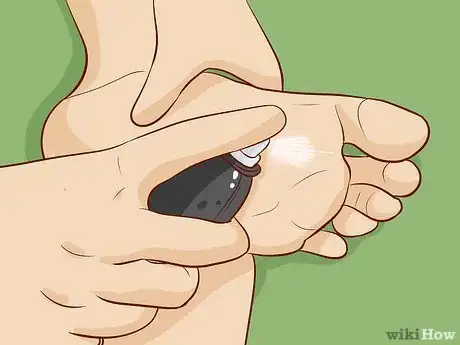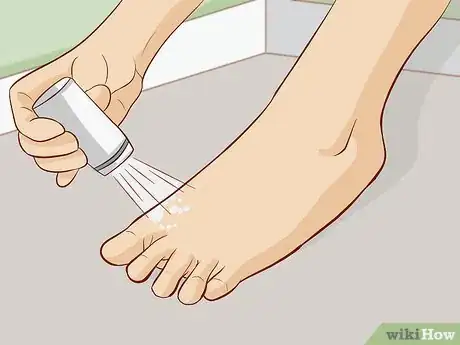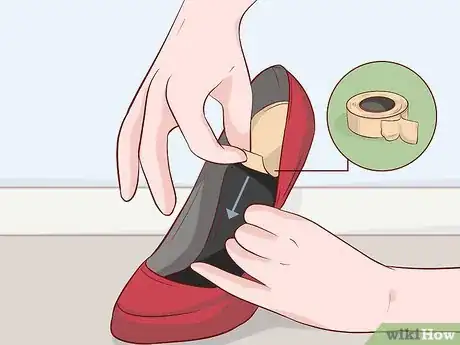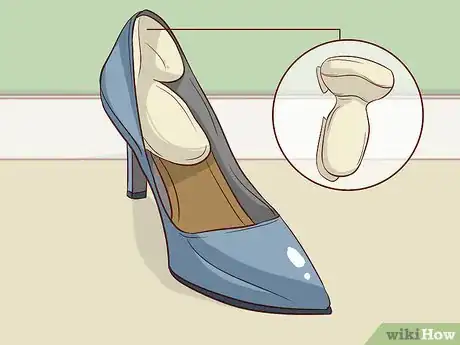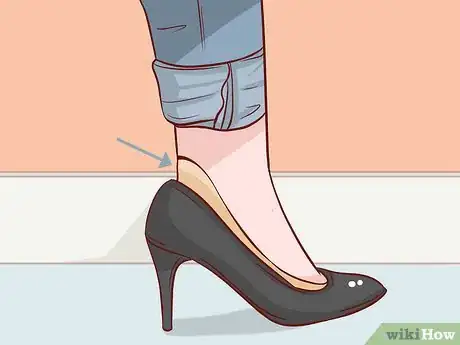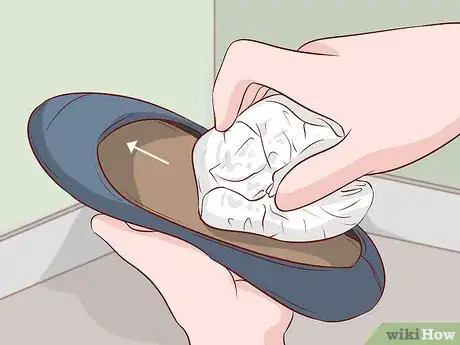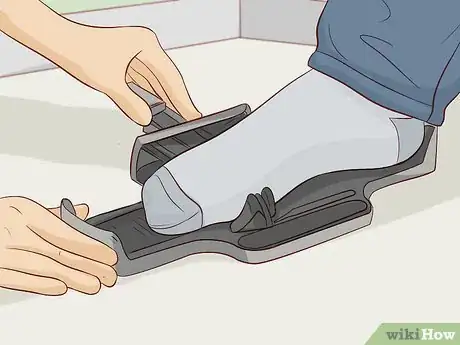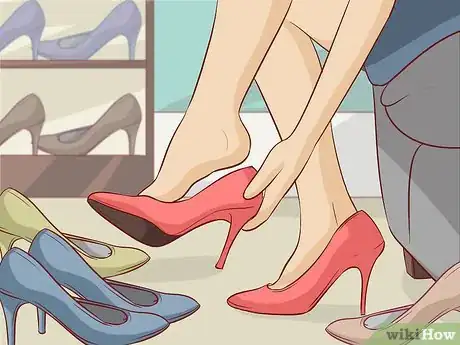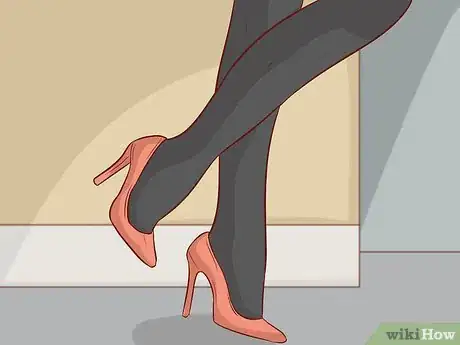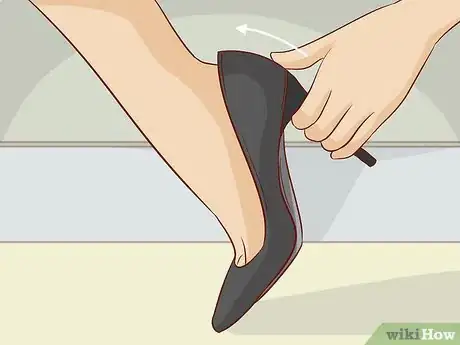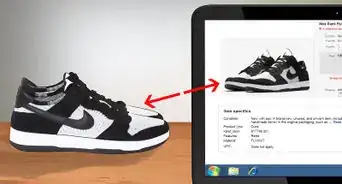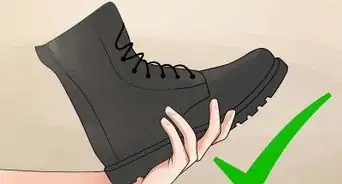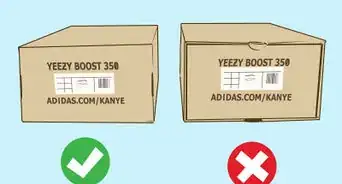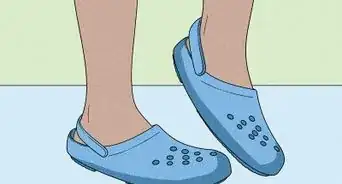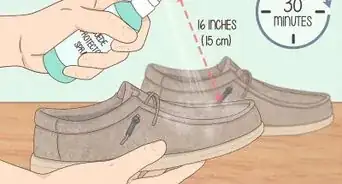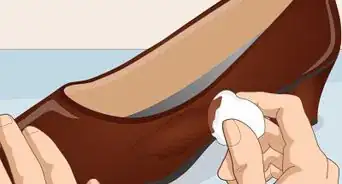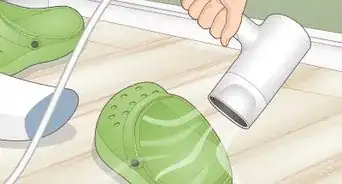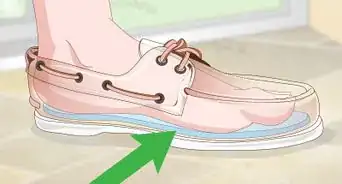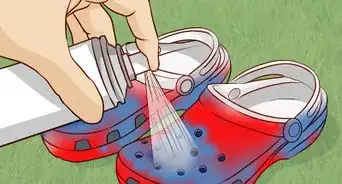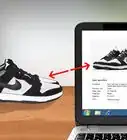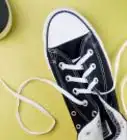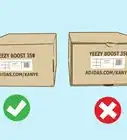This article was co-authored by Victor Adrian. Victor Adrian is a Footwear Expert based in London, UK. He is a Researcher, Tester, and Editor for BestForMyFeet.com, a leading footwear and footcare blog that discusses the importance of wearing the right footwear for the right occasion. Adrian is well-versed in determining which type of footwear is ideal for a variety of work and casual environments thanks to his vast working experience in different types of industries. He teams up with footwear professionals to test products and create comprehensive product reviews and comparisons that help readers choose the ideal footwear for their needs. Additionally, he collaborates with US board-certified podiatrists and foot doctors in order to make sure the information his team provides is always accurate. Adrian studied Biochemistry at the I.E.S. Calderon de la Barca Institute.
There are 7 references cited in this article, which can be found at the bottom of the page.
This article has been viewed 15,953 times.
There is nothing more annoying and potentially dangerous than an ill-fitting pair of shoes! If you find yourself struggling to keep your shoes on while you’re walking, you need a way to keep your heel from popping out. Try getting your feet to stick to your shoes with hairspray or double-sided tape. Consider investing in shoe inserts or tights with grips. Try a few different methods before giving up and getting rid of your favorite shoes.
Steps
Spraying, Taping, and Padding
-
1Keep slippery bare feet in place with a few spritzes of hairspray. Spray the bottom of your feet with a thin coat of hairspray and immediately put on your shoes. Sit with your shoes on for 1-2 minutes to let the hairspray dry, then go about your day as usual.[1]
- This method doesn’t work with socks or tights, but it might help you out if your bare feet often slide forward in your shoes.
- The hold should last for 2-3 hours, so bring along a mini-hairspray in your bag if you’ll be out for longer than that.
-
2Sprinkle talc in your shoes if your feet tend to get sweaty during the day. When your feet sweat, they slip forward, making it more likely that your heel is going to pop out of your shoe. Talc absorbs the sweat and makes it less likely that this will happen.[2]
- Cornstarch, arrowroot powder, baking soda, and baby powder are all similar products that can be substituted for talc.
Advertisement -
3Use double-sided tape to stick your feet to your soles more securely. Take a 1 to 2 in (2.5 to 5.1 cm) piece of double-sided tape and put it on the heel of your foot before putting on your shoes. Press your heel to the back of the shoe so the tape adheres.[3]
- There are also some double-sided tapes made specifically for slippery shoes, but you can try the grocery-store staple first to see if it will work for you.
-
4Invest in cushions or inserts to get a tighter fit on your shoes. If your shoes are too long, get inserts for the toes to take up some extra space. If your shoes are too loose, inserts that go along the bottom of the shoe can help your foot fit more snug.[4]
- You can purchase cushions and inserts at a shoe store or online.
Did You Know? There’s a good chance your feet aren’t the same size. One may be slightly bigger or smaller than the other, which means you may experience more slippage on one side. Adjust the fit of your shoes for each foot individually.
-
5Wear tights or socks with sole or heel grips. This won’t help if you’re going barefoot, but if you’re wearing shoes that can be paired with tights or socks, grips can do a lot to keep your feet in place. There are a lot of different products made for different styles of shoes, so you should be able to find something that will work for you.[5]
- This is a great option for heels, flats, and athletic shoes.
-
6Stuff the toes of your shoes with tissue paper to make them smaller. This is a great option if you find yourself out somewhere while wearing a new pair of shoes that turn out to not be the best fit. Just visit a restroom, take some tissue, ball it up, and stuff it down in the toes of your shoes. Your feet won’t slide forward as much and your heels should stay in place.
- You can even do this as a permanent fix. You may just need to replace the tissue from time to time, especially if it gets wet.
Picking Shoes that Fit Right
-
1Have your feet measured at a shoe store to find your true fit. Length and width are both important measurements to know. Also, make sure you’re measuring on the right setting depending on whether you purchase men’s, women’s, or children’s shoes.[6]
- If your results are what you expected but you often run into a slippage issue, try buying down a half size to see if that solves your problem.
Tip: Having your feet measured is a great first step, but it isn’t foolproof. Depending on the brand of shoe, a 9 in one brand might be much smaller than a 9 in another brand. It’s always best to check the fit in person when you can.
-
2Go shoe shopping early in the day when your feet are less swollen. If you try on shoes later in the day when your feet are starting to swell, you may think a pair of shoes fit perfectly. In the morning, you may find they’re a bit too loose and that your heel is coming out because your feet are less swollen.[7]
- Similarly, avoid shoe shopping if your feet are swollen from sodium or heat.
-
3Try on shoes while wearing the same socks or tights you normally use. Sheer tights or hose can make your feet slip around in shoes that otherwise would stay put. Socks may make a pair of shoes too tight. By trying shoes on with the right accessory, you’ll have a better chance at buying the right size.[8]
- Bring along your own socks or wear your own tights or hose the next time you go shoe shopping.
-
4Slide your foot all the way forward to see if there is a gap at the heel. Really push your feet forward in the shoes when you try them on. As the shoes loosen up, your feet will probably slide forward even more. Look at how big of a gap there is between your heel and the back of the shoe. If you can fit your thumb in there, try going down a half size.[9]
- Try walking around in the shoes, too. If your heel is already coming up while you’re in the store, go down a half or full size.
Expert Interview
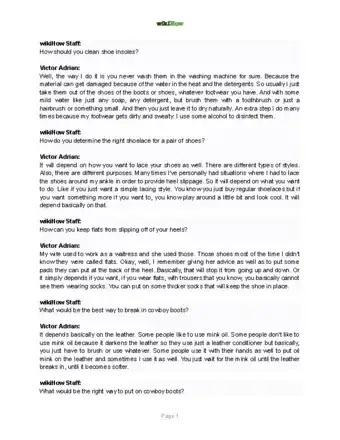
Thanks for reading our article! If you'd like to learn more about shoes sizes, check out our in-depth interview with Victor Adrian.
References
- ↑ https://youtu.be/CuRlDgTMLcg?t=71
- ↑ http://www.shoeperwoman.com/stop-shoes-slipping-off/
- ↑ http://www.shoeperwoman.com/stop-shoes-slipping-off/
- ↑ https://youtu.be/I7GKQLAWWIE?t=15
- ↑ http://www.shoeperwoman.com/stop-shoes-slipping-off/
- ↑ https://youtu.be/n0GidFjL6qY?t=83
- ↑ https://youtu.be/FfWhElhwyys?t=132
- ↑ https://youtu.be/FfWhElhwyys?t=89
- ↑ https://youtu.be/n0GidFjL6qY?t=281
